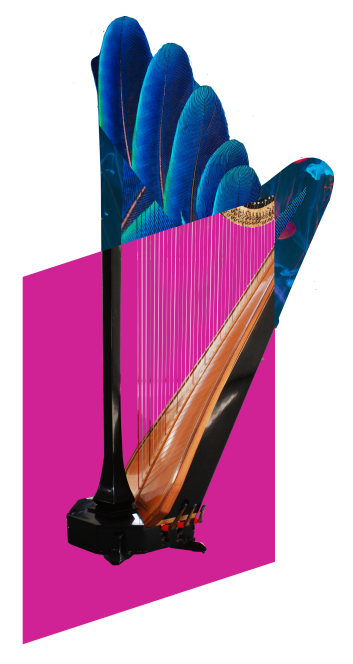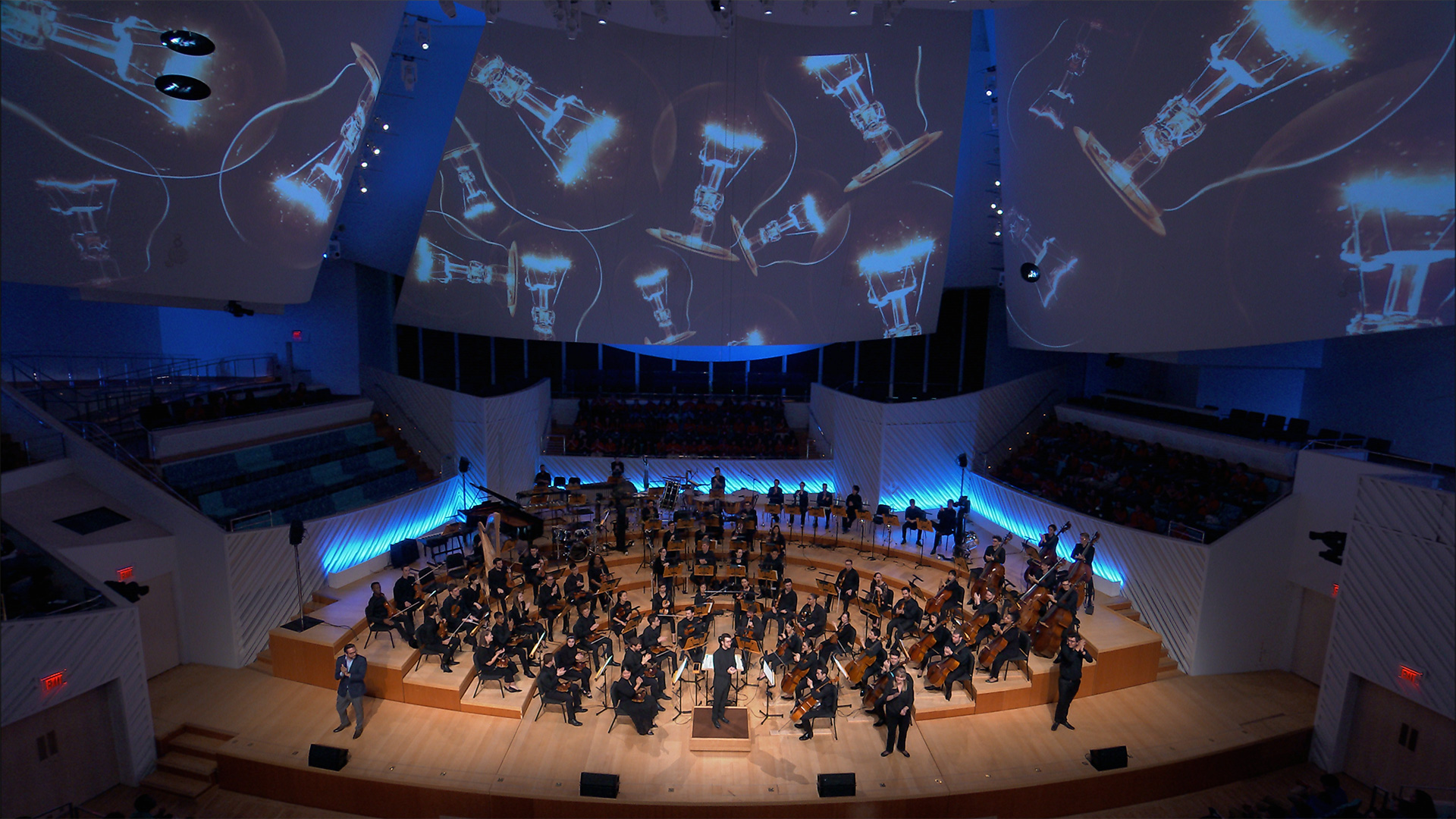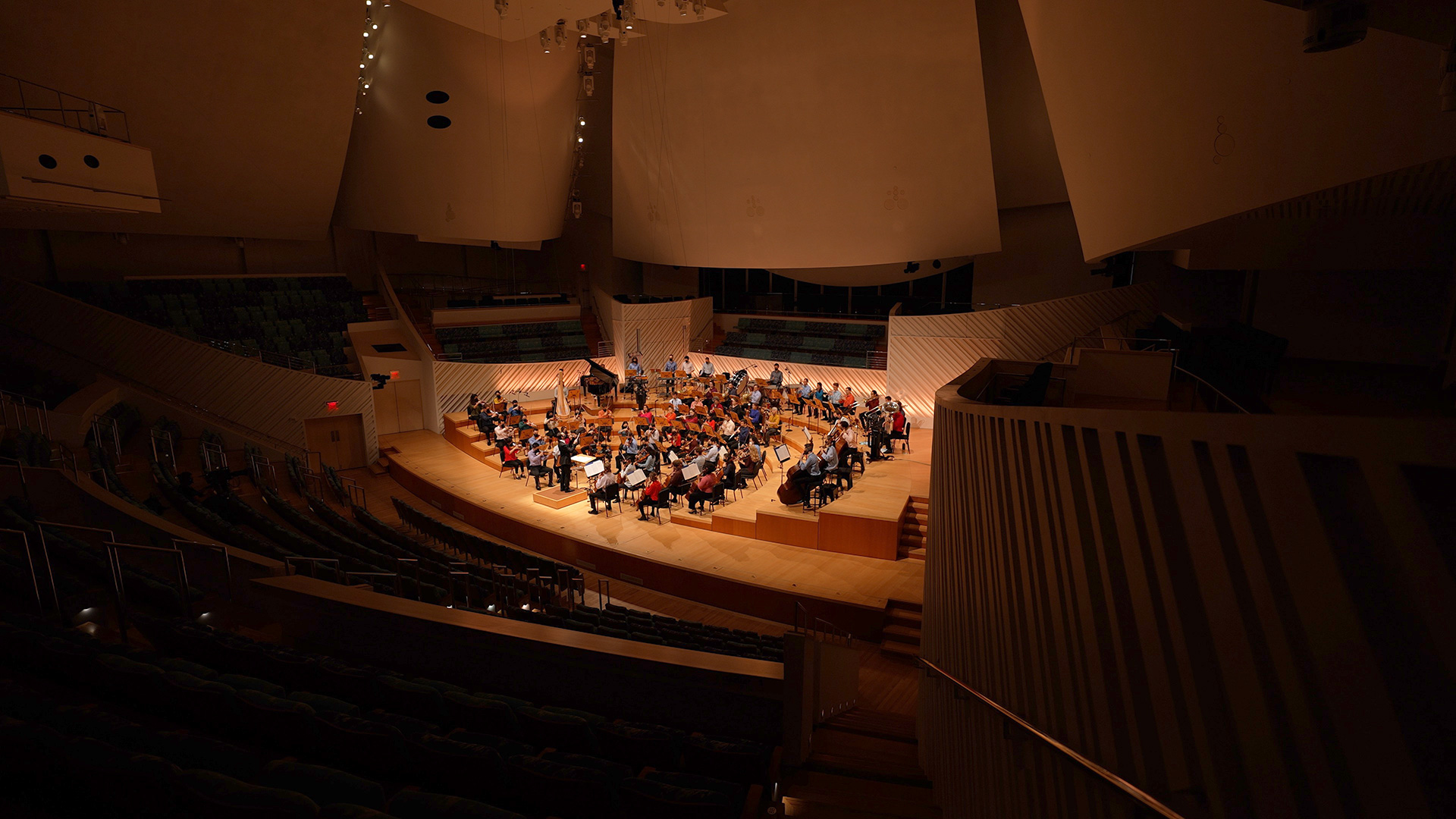Storytelling

Goals
Audience will explore how narrative can be represented in music.
Overview
Create a narrative for your piece and share it with your audience.
Process
- Examine your piece for narrative elements. See if there’s a story arch you can follow and expand upon. Is there action in the middle? How does it end? Who are the characters? Have musical reasons that inspire your story, and include examples as you create a full narrative.
- Present your story to your audience before the performance. Afterwards, include time to get feedback from the audience – did they think the story fit the music? Do they have their own story they imagined as they listened?
Audience Type

What does this activity look like in action?
Example Script:
Piece: Angélica Negrón – What Keeps Me Awake
Performer: Are you scared of anything?
Spiders? Snakes? Sharks? Monsters? Siblings? Homework assignments??
This piece was written in 2008 about something that was keeping composer Angélica Negrón awake at night.
Let’s create a story together to go along with her piece.
The piece opens with a dreamy soundscape, with a wandering cello line… let’s hear that now:
Play opening measures
The character in our story is trying to get to sleep, but there’s something that’s nagging at them. Who do you think this character is? (Accept responses).
In the next section, our character ventures out to try to confront their fears.
Play next section with more action
The character is beginning their journey to face their fear! What kind of route are they taking to begin this quest? (Accept responses).
The harp speeds up and we enter a section of more trouble. The strings are playing faster and the low brass add slightly ominous chords to the mix. Our character is perhaps confronting their fear. What is this fear they’re facing? (Accept responses).
Play more ominous section
We get a calmer section with the brass, our character maybe gets a moment of relaxation… It seems like there might almost be calm, but the ending doesn’t seem really conclusive – Do you think the character got to sleep at the end? Or does their fear continue to haunt them? (Accept responses).

Modifications
- For higher interactivity levels, including ask the audience to contribute their own story, see “Create Your Own Adventure” activity. After you’ve performed your selection with your story, follow up with the audience. Ask if they think your story was reflected well in the music, or if there are things they would change. Ask if they had a completely different idea of how the story should go after they listened.
Notes
- Can transition well to Audience Composition Activity. Ask for their story elements and create a new piece from a story they want depicted in music.
- Sometimes, two listenings will benefit the audience and give them time to explore their imagination more in depth.
Create interactive performances. We have activities to help you connect with your audiences.


